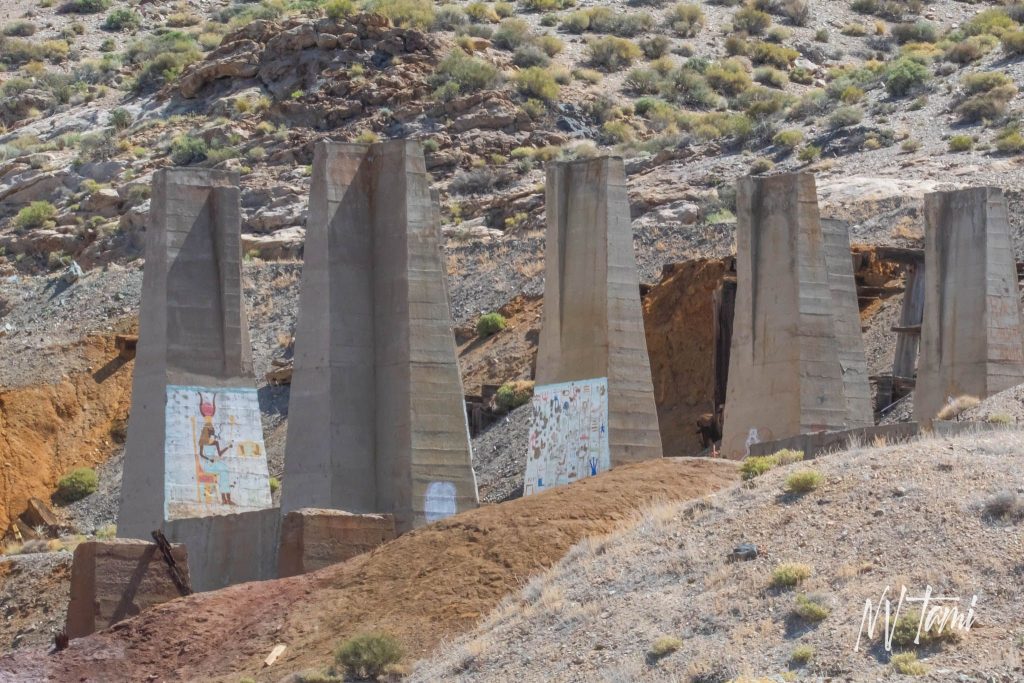
Ludwig is an unusual Nevada ghost town. It is not known for cool old wood or rock buildings but for concrete, pyramid-like supports covered in Egyptian hieroglyphs.
At the north of Smith Valley, Ludwig was connected to Mason Valley by the Nevada Copper Belt Railway, which transported ore for smelting. Ludwig was a peaceful town that enjoyed simple events like “Railroad Day,” but saloons and brothels weren’t too far away.
Nevada-Douglas Mines
Miners discovered high-grade ore in 1865 on the west side of the Singatse Range at the north end of Smith Valley. From 1865 until 1868, attempts to process copper ore had limited success.
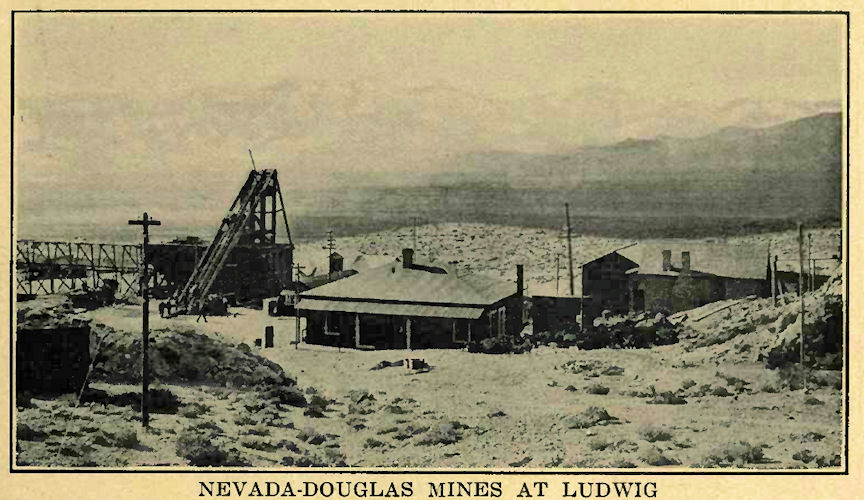
(Photo credit: Yerington Mondays)
In 1907 the Nevada-Douglas Company purchased the mine. With technological advances, they could process the copper ore effectively.
Thompson Smelter

(Photo credit: University of Nevada)
Mason Valley Mines Company constructed the Thompson Smelter in 1911. It was located on the east side of the Sigatse Range, a few miles south of Fort Churchill. The Nevada Copper Belt Railway connected Ludwig to the smelter via beautiful Wilson Canyon.

Morningstar
A town named Morningstar was established at the base of the hill below the mine. The town was named after Freeman Morningstar and a post office opened on June 12, 1908. Morningstar was renamed Ludwig, on November 24, 1911, in honor of John D. Ludwig, an “early Indian fighter,” who discovered the largest mine in the district.
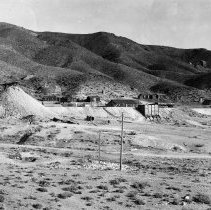
(Photo credit: UNR Libary)
At its height in 1913, Ludwig had 1000 residents. Ludwig had sixty-five buildings, including the usual stores and a school, social club and infirmary.
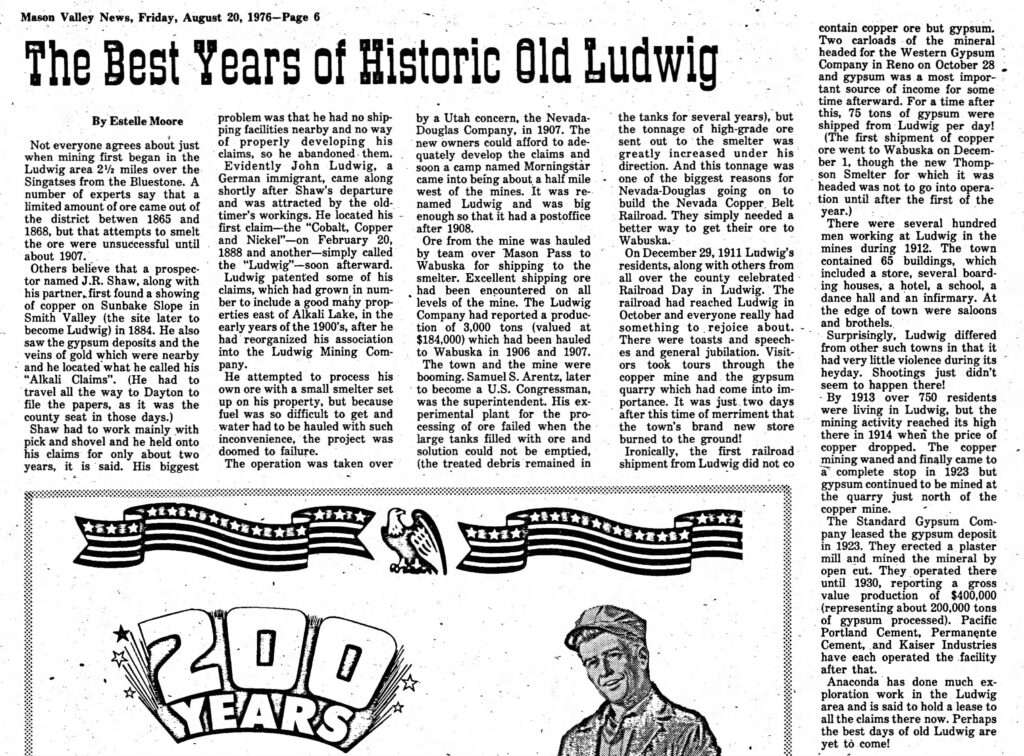
August 20, 1976
Saloons and brothels were situated on the outskirts of town. Possibly due to the location, Ludwig was a peaceful town and did not have the shootings or violence common to other mining towns.
Railroad Day
On December 29, 1911, Ludwig celebrated the arrival of the Northern Nevada Copper Belt Railway. Residents of the town and Lyon County attended the grand festival. Attendees toured the mine and quarry. Sadly, on December 31, the town’s new store burned to the ground.
There were toast and speeches and general jubliation.
Mason Valley News
August 20, 1976


(Photo credit: Nevadagram and Yerington Mondays)
Cooper mining decreased after 1914 as copper prices declined, and all copper production stopped in 1923. Gypsum mining began in the 1920’s and extended the town’s life for a decade. In 1930, the gypsum mine closed and Ludwig became a ghost town and the post office closed on July 19, 1932 with service transferred to Hudson.
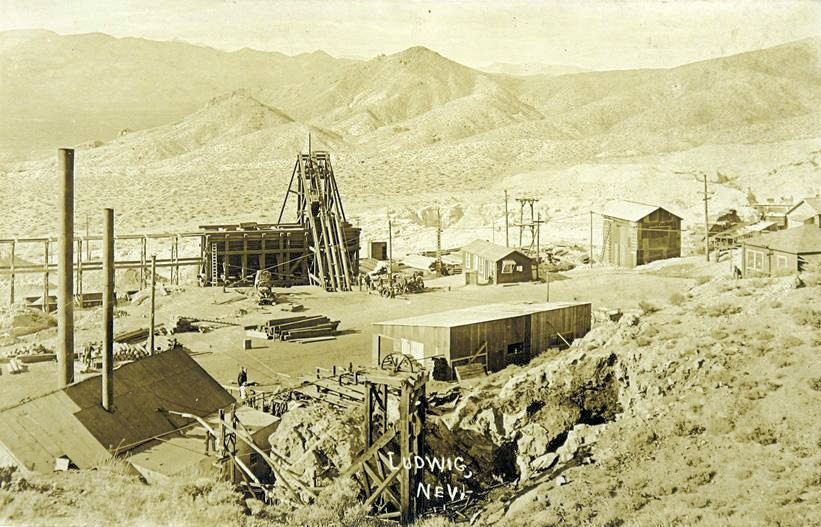
The town site of Ludwig remained intact until the 1950’s when town structures were removed. The Ludwig mine has remaining concrete structures, foundations and tailings.
Art?
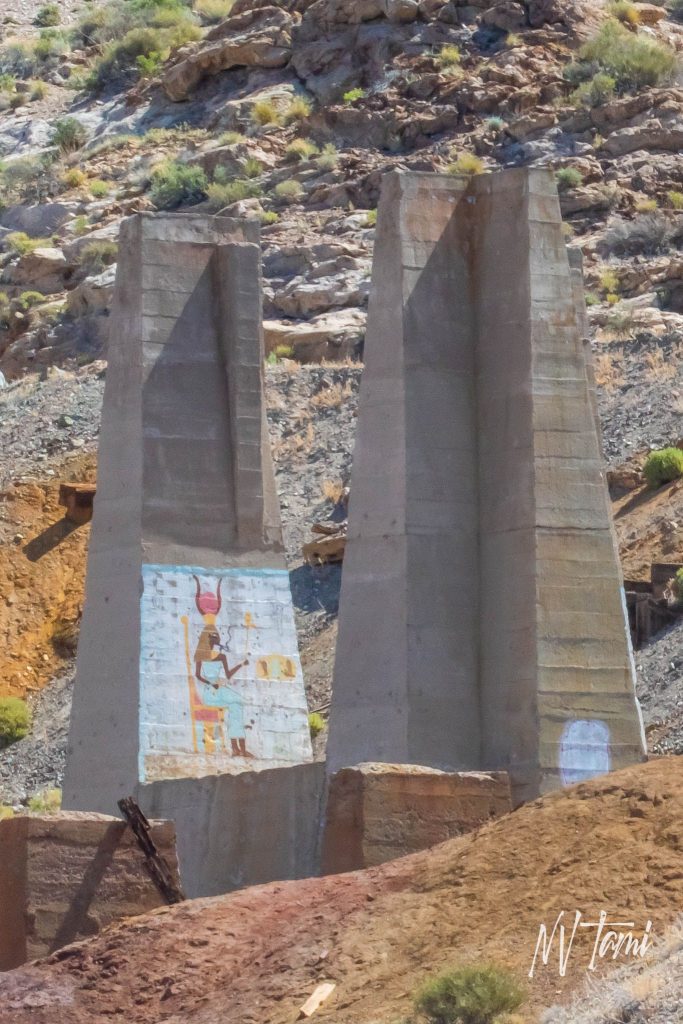
Art students used the concrete pillars as a canvas for their work. Depending who you ask the paintings are artwork or destruction of historical heritage.
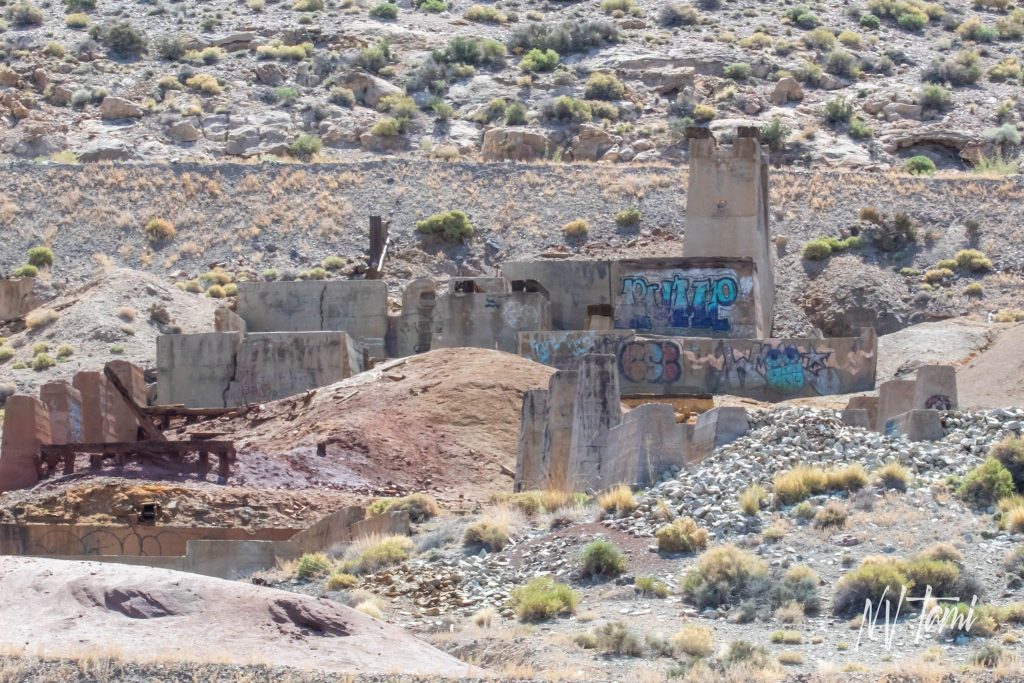
Tragedy at Ludwig
In 2008 a California man was exploring Ludwig with friends and family. He fell over 80 feet into a mine shaft. They were able to recover his body but he died at the scene.
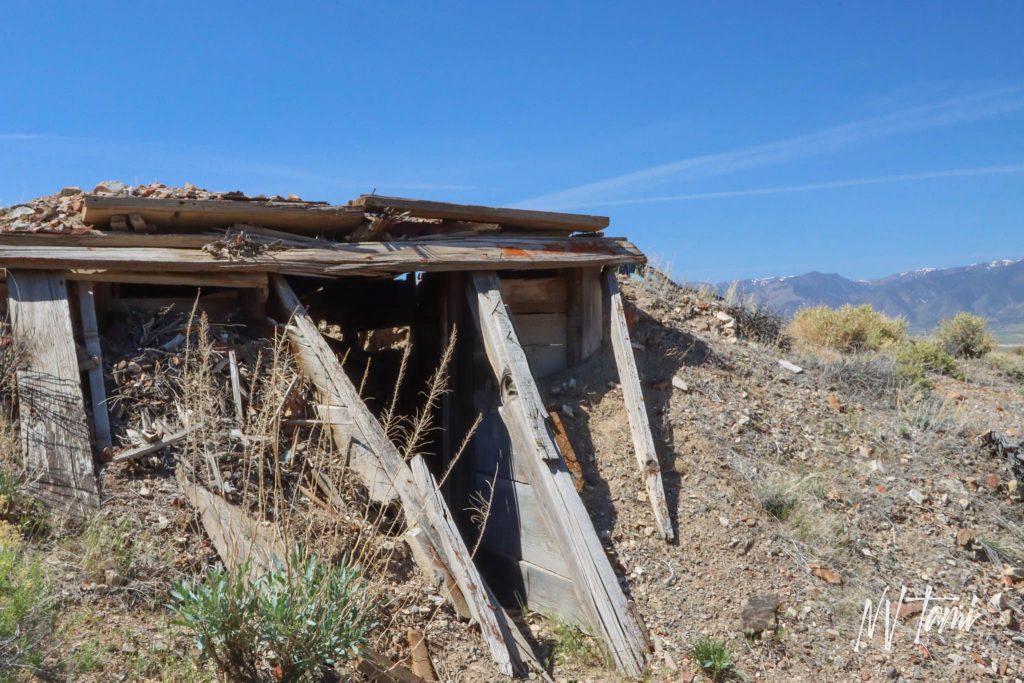
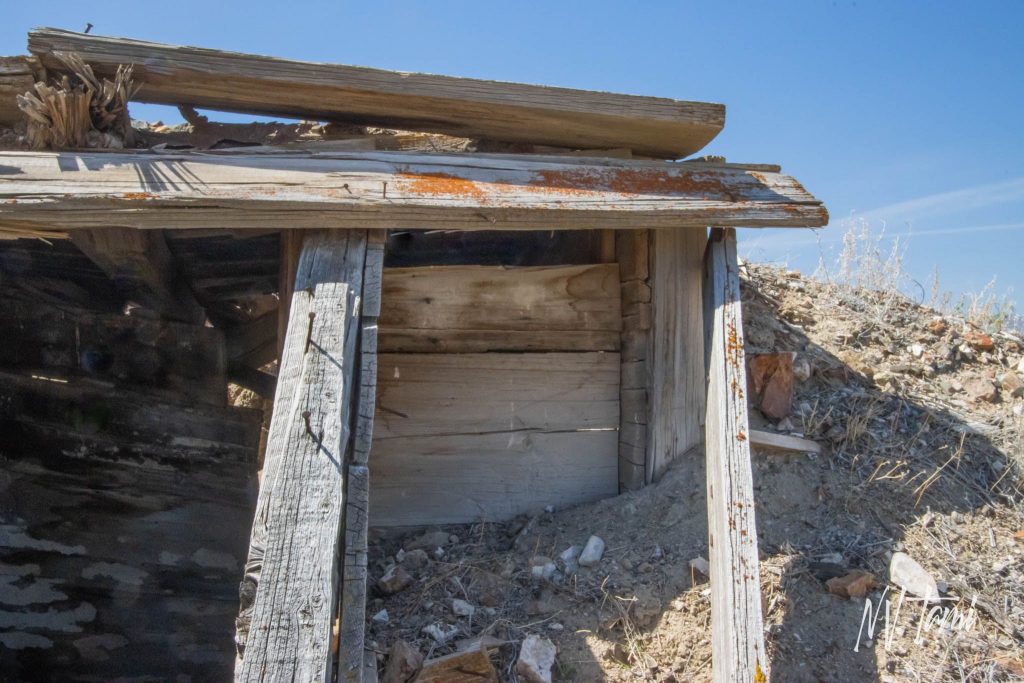
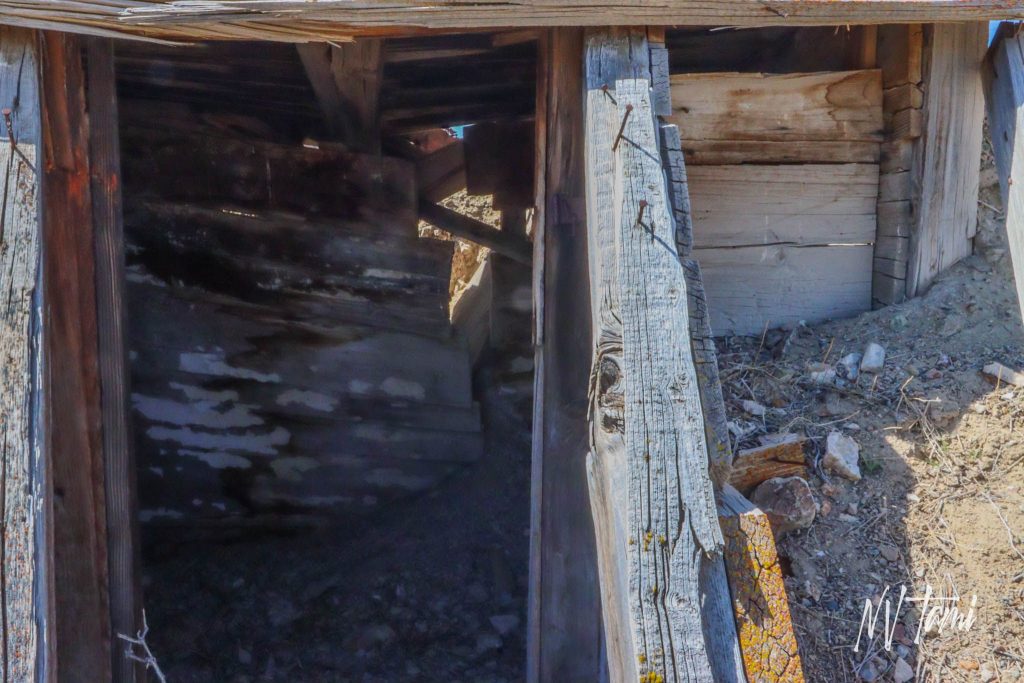
Ludwig has been fenced off for several years. Thankfully I had my 600mm lens with me so I could get photos of Ludwig from a distance. Outside of the fenced area there are still mine shafts and debris.

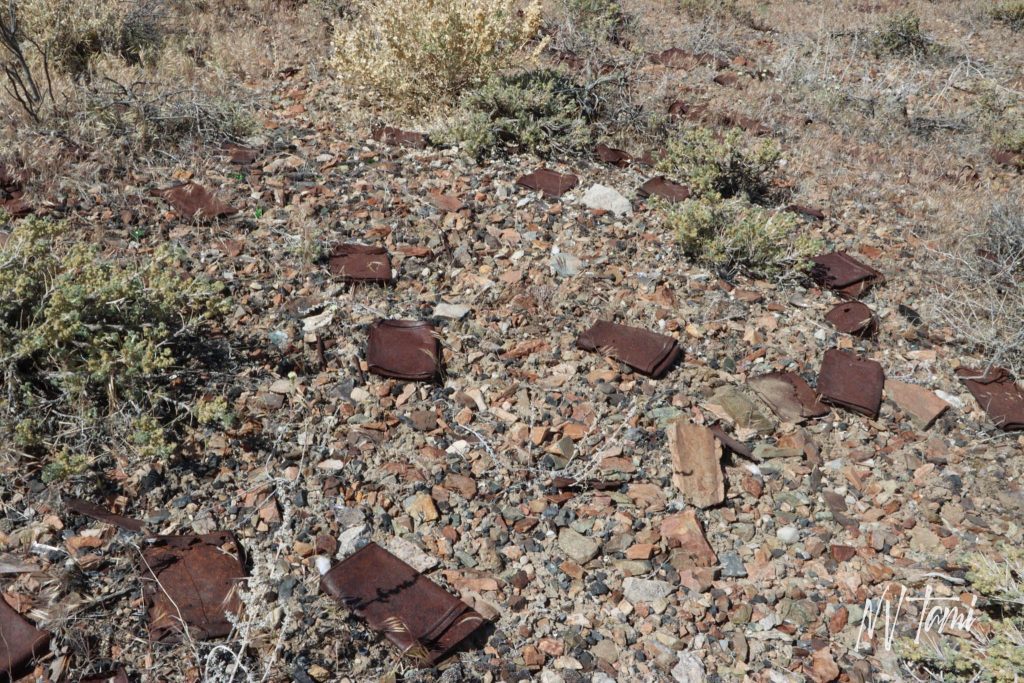
The Walker River Resort is a few miles south. I have not stayed yet, but friends have said the resort is a wonderful place to rent a cabin or RV site. The ghost town of Hudson is on their property. Walker River Resort relocated the Hudson train depot and uses it for special events at the resort. The former location of Delphi, Nevada lies between Ludwig and Hudson.
Visited 8-1-2020, 5-9-2020
References
- Carlson, Helen S. Nevada Place Names: A geographical dictionary. University of Nevada Press, 1974. Pages 159, 172.
- Gamett, James and Stanley Paher. Nevada Pot Offices: An illustrated history. Nevada Publications, 1983. Pages 80, 96.
- Mason Valley News: The best years of historic old Ludwig. August 20, 1976
- Massey, Peter et al.: Nevada Trails: pages 186-193.
- Mindat: Ludwig Mine
- Nevadagram: Railroad Motor Cars of Nevada – Part I
- Paher, Stanley: Nevada Ghost Towns and Mining Camps. Nevada Publications, 1970. Pages 84-86.
- UNR Libraries: Ludwig Douglas Copper Company
- Western Mining History: Ludwig Mine
- Wikimedia: Nevada Copper Belt Railroad
- Yerington Mondays: The Mines of Lyon County: Ludwig Mine
- Yerington Mondays: Nevada Copper Belt Railroad
Steve Knight says
Good pictures. Glad you made it
admin says
We went a few weeks ago. I had heard Ludwig wasn’t fenced anymore so thought we could get up there. It was still fenced but someone had cut the wires. We didn’t go father than where the fence line.
Robin G says
I love seeing the area through your eyes and photos!
admin says
Thank you Robin!
John Spencer says
I used to live in Smith Valley and I think you did a very nice job of covering the site for us.
Tami says
Thank you, that means a lot to me!
Lol Murphy says
Thank you for all your investigations, pictures and your thoroughness. Great job!
Tami says
Thank you so much; you made my evening.
Ed says
My girlfriend and I explored Ludwig mine this weekend beautiful area drawings reminded me of railroad tunnels in truckee wish I could have found where the railroad route ran Nevada has so much interesting history
Tami says
It was a beautiful weekend to explore. The ruins do have the same feel as the Truckee Tunnels.
You probably crossed over the old railroad line. If you go farther towards Walker River Resort you can see the raised grade from the NNCB RR.